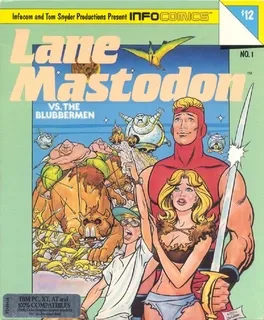Popular games published by company Infocom
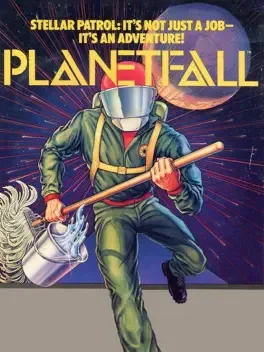
Planetfall is a science fiction interactive fiction computer game written by Steve Meretzky, and the eighth title published by Infocom in 1983. Like most Infocom games, thanks to the portable Z-machine, it was released for several platforms simultaneously. The original release included versions for the PC (both as a booter and for DOS) and Apple II. The Atari ST and Commodore 64 versions were released in 1985. A version for CP/M was also released. Although Planetfall was Meretzky's first title, it proved one of his most popular works and a best-seller for Infocom; it was one of five top-selling titles to be re-released in Solid Gold versions including in-game hints. Planetfall utilizes the Z-machine originally developed for the Zork franchise and was added as a bonus to the "Zork Anthology". The word planetfall is a portmanteau of planet and landfall, and occasionally used in science fiction to that effect. The book Planetfall written by Arthur Byron Cover, uses the game image on the cover, and is marketed "In the bestselling tradition of THE HITCHHIKER'S GUIDE TO THE GALAXY.[2] A sequel, Stationfall, was released in 1987. Planetfall teleports you 12,000 years into an outrageous future. You joined the Stellar Patrol to explore the galaxy, but all you've seen is the end of a mop - until your ship explodes and you're jettisoned onto a mysterious, deserted planet. Luckily, you have Floyd, a lovable multi-purpose robot with the personality of a mischievous 8-year-old. He's the ideal companion with whom to brave your new world, as you dare its dangers and uncover its secrets.
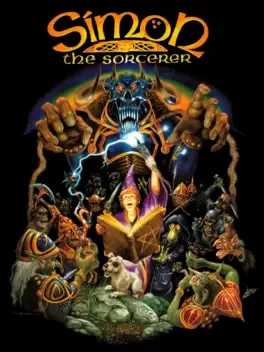
Simon the Sorcerer is an adventure game that was released by Adventure Soft on 2 January 1993 for Amiga and DOS formats. The game's name comes from the account of Simon the Sorcerer in Acts 8. The game includes parodies of various popular books and fairy tales, including Rapunzel, The Lord of the Rings, The Chronicles of Narnia, Jack and the Beanstalk and the Three Billy Goats Gruff.
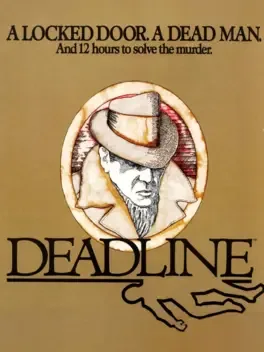
Deadline is an interactive fiction computer game published by Infocom in 1982. Written by Marc Blank, it was one of the first murder mystery interactive fiction games. Like most Infocom titles, Deadline was created using ZIL, which allowed the easy porting of the game to popular computer platforms of the time such as the Apple II and the Commodore 64. It is Infocom's third game. The player's character in Deadline is an unnamed police detective, summoned to a sprawling Connecticut estate to investigate the apparent suicide of wealthy industrialist Marshall Robner. At first, it seems a very straightforward case: the body was discovered in the library, which had been locked from the inside, and the cause of death was an overdose of his prescribed antidepressants. But something just doesn't feel right. Could someone have killed Robner for his money? Did he make an enemy through his business dealings? Or was there some other motive? With the able assistance of level-headed Sgt. Duffy, the player has twelve hours to solve the case before it is closed forever.
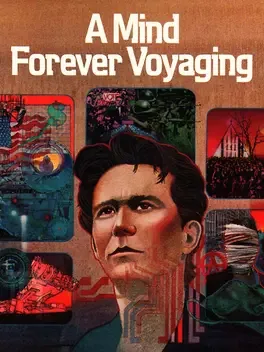
A Mind Forever Voyaging (AMFV) is a 1985 interactive fiction game, intended as a polemical critique of Ronald Reagan's politics.

Many centuries ago, the Earth was ruled by Sorcerers and Wizards. They possessed mystical powers capable of both good and evil. The most respected influences in the land were from the good Sorcerers. This fact continually disturbed the evil Wizards, and they eventually decided to use their power to conquer the countryside and enslave its people. They devised a plan to systematically eliminate the good Sorcerers by sending wave after wave of diabolical creatures to ravage the world. As the bravest of the good Sorcerers you have been asked to destroy these forces and save the planet. As a reward for your bravery: whenever you overcome or destroy a creature, you will receive a treasure. Knowing your bravery the Wizards have done everything within their power to keep you from succeeding. They don't believe you will survive their first three waves of evil, but just in case you do they have several surprises waiting, Only you can discover through bravery and talent how evil they can become. To give you more power over the Forces of Evil the good Sorcerers have provided a magical Flying Platform. When you start on your journey you should first catch this elusive platform. You can continue without it, but only the foolish would dare to do so. Once on the Flying Platform you can go anywhere on the screen to avoid or destroy the enemy. The good Sorcerers have also given you four lives to use against the Forces of Evil.
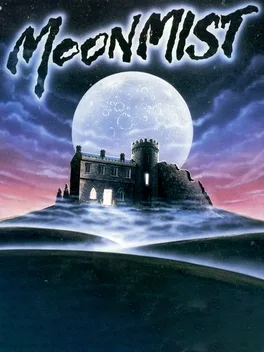
Moonmist is an interactive fiction computer game written by Stu Galley and Jim Lawrence and published by Infocom in 1986. The game was released simultaneously for many platforms, including the IBM PC, Apple II, Amiga, Atari ST and Commodore 64. It is Infocom's twenty-second game. Galley and Lawrence previously wrote Seastalker for Infocom. The player's character is a young detective, asked by friend Tamara Lynd to investigate her new home of Tresyllian Castle in Cornwall, England. Tamara has recently become engaged to the castle's lord, Jack Tresyllian. She was very happy until she began seeing what appeared to be The White Lady, a ghost who has allegedly haunted the castle for centuries. As if seeing a ghost wasn't nerve-racking enough, she's also begun to fear for her life. Is Tamara's imagination just overly excited from living in a large old castle, or is someone really trying to kill her? And if her life is in danger, is it from a ghost or someone using it as a disguise?
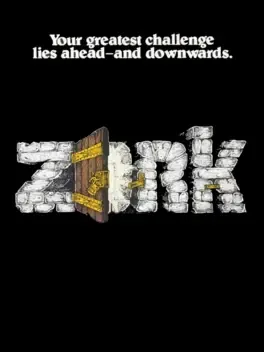
Zork is one of the earliest interactive fiction computer games, with roots drawn from the original genre game, Colossal Cave Adventure. The first version of Zork was written in 1977–1979 using the MDL programming language on a DEC PDP-10 computer.
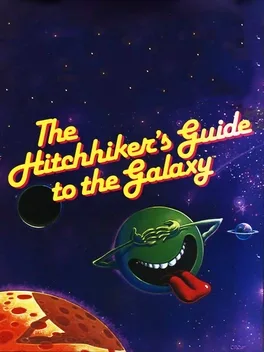
The Hitchhiker’s Guide to the Galaxy is a classic Interactive Fiction game. Though divergent from the source material, the main characters, locations, and concepts are here. Unlike the book, death can come quickly if Arthur fails to observe his surroundings, collect inventory, talk to people, and consult the Guide. Don't panic!
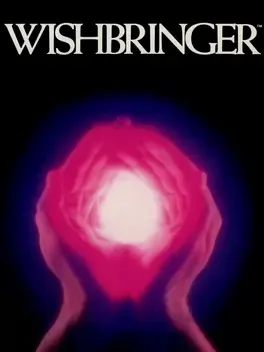
Wishbringer: The Magick Stone of Dreams is an interactive fiction computer game written by Brian Moriarty and published by Infocom in 1985. It was intended to be an easier game to solve than the typical Infocom release and provide a good introduction to interactive fiction for inexperienced players, and was very well received.
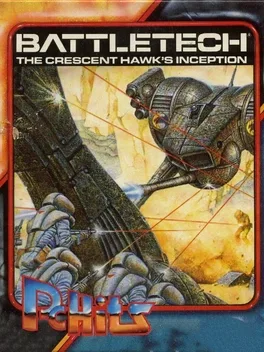
20 Lethal tons of massive fighting power are primed for battle and your in control. The 31st century is a desperate time. Five Successor States are hopelessly locked in mortal struggle for power. In this era of endless war, the powerful, death-dealing BattleMechs are valued higher than human life. You are 18-year-old Jason Youngblood, and fate has given you a terrible gauntlet to run. Abruptly wrenched from the intense drilling of 'Mech warrior training, you are plunged into real battle with deadly Kurita warriors. Savage experience is now your unforgiving teacher, and the very survival of The Lyran Commonwealth demands you learn the ruthless precision of battle strategy quickly. Can you, the son of legendary "Mech warrior Jeremiah Youngblood, steel yourself for the greatest challenge of your life? Authentic Battletech combat is yours to command. The master storytellers of Infocom have joined forces with FASA, the creators of Battletech and the computer wizards of Westwood Associates to bring you an unparalleled adventure. You're in command: you choose your weapons and your target for each member of your fighting unit. Experience the thrill of battle as you move your "Mechs across the far-reaching terrain of Chara IV.
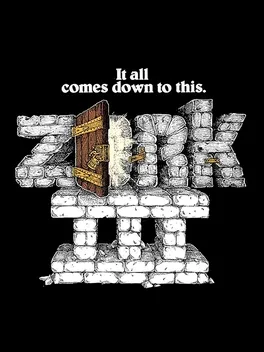
In the third game of the adventure game series Zork, you are once again a nameless adventurer, only this time you won't travel through a beautiful magical land, but are immediately cast into a deep dungeon. Like in a dream, you hear a mysterious voice telling you that you have passed all the tests but one. When conscience returns to you, you find yourself on the endless spiral of stairs, with only your trusty lantern near you... will you be able to survive the horrors of the Dungeon?
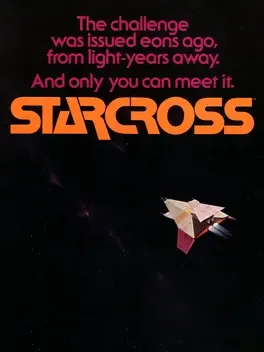
The year is 2186. Humanity has established colonies on the moon, Mars, and several of the larger asteroids. Earth's sky is dotted with space habitats, and the spaceways are always busy. As usual, there is the urgent need for energy to power this advanced civilization; one of the primary sources of that energy is quantum black holes. In Starcross, you are a miner of black holes, scouring the asteroid belt in your one-man survey ship. Finding and harnessing a single black hole can make a person's fortune. It's a lonely business, fraught with the known and unknown hazards of space. You've equipped your ship, the M.C.S. STARCROSS, with the best gear you could afford. You've put everything into this venture, and though you've tried before, you somehow sense that this time will be different.
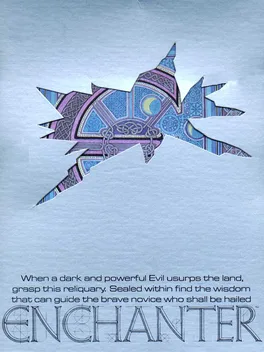
Enchanter is a 1983 interactive fiction computer game written by Marc Blank and Dave Lebling and published by Infocom. It belongs to the fantasy genre and was the first fantasy game published by Infocom after the Zork trilogy (it was originally intended to be Zork IV). The game had a parser that understood over 700 words, making it the most advanced interactive fiction game of its time. It was Infocom's ninth game. Krill, an incredibly powerful evil warlock, is spreading chaos and destruction. None of the more experienced members of the Circle of Enchanters dare to attempt to stop him. In desperation, the player, a novice Enchanter with only a few weak spells in his spell book, is sent in hopes that Krill will either fail to detect him or dismiss him as harmless. More powerful spells can be found on scrolls hidden in various locations, but as the player becomes more of a threat, Krill will respond accordingly. This game features an innovative new spell system based partially on Ursula K. Le Guin's Earthsea series and partially Dungeons and Dragons' Vancian spell system, where spells must be prepared through "memorization" before being cast. As in the Earthsea series, each spell is represented by some nonsense "magic word" which is treated as a verb by the game's text parser, so that one can use the FROTZ spell (which causes objects to glow and give off light) by typing >FROTZ BOOK, in exactly the same way as one might type >PICK UP BOOK or >READ BOOK.

Spellbreaker is an interactive fiction computer game written by Dave Lebling and released by Infocom in 1985, the third and final game in the "Enchanter Trilogy". Like most of Infocom's games, it was released for many of the time's popular computer platforms, such as the Commodore 64, Atari ST and Apple II. It is Infocom's eighteenth game. Over the course of events in the trilogy's earlier games from 956 to 957 GUE (Enchanter and Sorcerer), the player's character has progressed from a novice wizard possessing a few weak spells to the leader of the Circle of Enchanters. Now, in 966 GUE (ten years after the events of Enchanter), the very foundations of Magic itself seem to be failing, and the leaders of all the Guilds in the land have gathered to demand answers. In the midst of this impassioned meeting, the crowd is suddenly transformed into a group of toads and newts. Everyone present is affected except for the player and a shadowy figure who flees the hall.
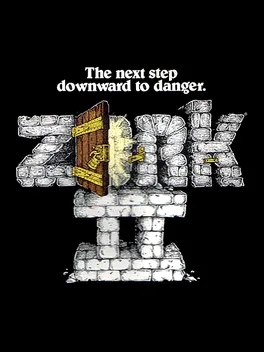
The adventure begins in the Barrow from "Zork I" armed only with the trusty brass lantern and sword of elvish antiquity. The purpose of the game is not initially clear. Like its predecessor, Zork II is essentially a treasure hunt. Unlike the previous game, the ten treasures are tied together by a crude plot. Finding the treasures does not end the game, nor are all the treasures needed to finish the game. Instead, the adventurer must figure out a way to use the treasures in order to reach the game's finale.
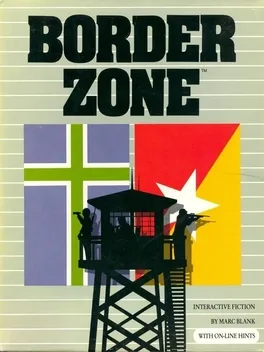
Border Zone is a text adventure game in which the player controls three different protagonists throughout three chapters
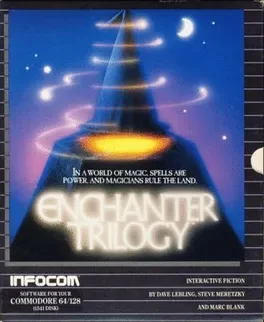
Enchanter Trilogy is an Infocom compilation that contains three text adventures set in the Zork universe.
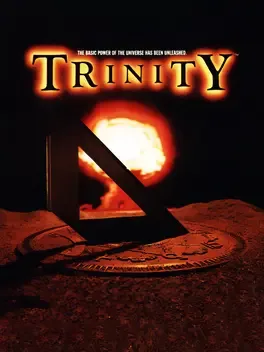
Trinity is an interactive fiction computer game written by Brian Moriarty and published in 1986 by Infocom. The plot blends historical and fantastic elements as part of a prose poem regarding the destructive power of the atomic bomb and the futile nature of war in the atomic age. The name refers to the Trinity test, the first nuclear explosion, which took place in July 1945.
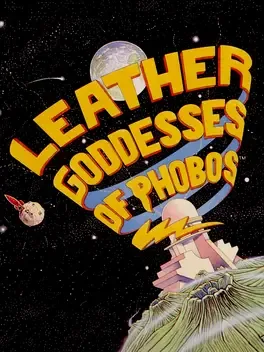
The year is 1936, and suddenly the protagonist is abducted by the Leather Goddesses for the final testing in the plan which will enslave every man and woman on earth. These Leather Goddesses of Phobos are just finishing up their plans for the invasion of Earth. If the hero fails to escape and save humanity, the Leather Goddesses will turn the Earth into their pleasure dome. Leather Goddesses of Phobos is a text adventure with humorous overtones. The player uses standard commands in the text parser to observe his environment and pick up items. The game's 'naughtiness' level can be adjusted between Tame (G), Suggestive (PG), and Lewd (R).
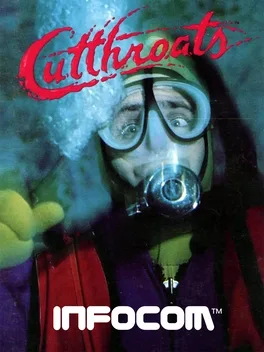
Cutthroats is an interactive fiction computer game written by Michael Berlyn and Jerry Wolper and was published by Infocom in 1984. Like the majority of Infocom's games, it was released for most of the popular computer platforms of the time, such as the Apple II, DOS, Commodore 64 and several other platforms. It is Infocom's thirteenth game.
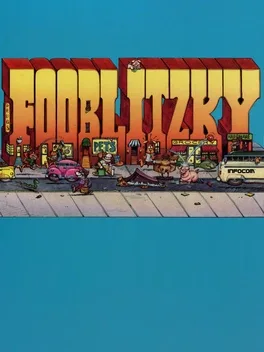
A board game style strategy game.
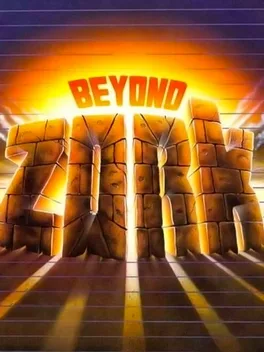
Beyond Zork: The Coconut of Quendor is an interactive fiction computer game written by Brian Moriarty and released by Infocom in 1987. It was one of the last games in Infocom's Zork series It signified a notable departure from the standard format of Infocom's earlier games which relied purely on text and puzzle-solving: among other features, Beyond Zork incorporated an on-screen map, the use of character statistics and levels, and RPG combat elements. The game, Infocom's twenty-ninth, was available on the Amiga (512kb), Apple (128kb), Atari ST, Commodore 128, and IBM (192kb), and the Macintosh (512kb) computers The player explores the Southlands of Quendor somewhat aimlessly at first. Soon, however, a task is bestowed by the Implementors, a group of godlike creatures jokingly based on Infocom's game designers. The Coconut of Quendor, an incredibly powerful artifact that embodies the whole of Magic, has fallen into the claws of an unspeakably foul beast: an Ur-grue. Rumoured to be the spirits of fallen Implementors, Ur-Grues can surround themselves in a sphere of darkness that only sunlight can pierce. The player must recover the Coconut from this monster's grasp or face the unthinkable consequences.
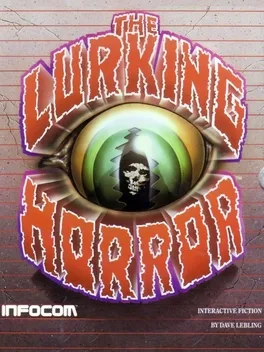
The Lurking Horror is an interactive fiction game released by Infocom in 1987. The game was written by Dave Lebling and inspired by the horror fiction writings of H. P. Lovecraft (including his Cthulhu Mythos). Like most of Infocom's games, it was released for several platforms simultaneously thanks to the Z-machine. The original release included versions for DOS, the Apple II, Atari ST, Atari 8-bit family and Commodore 64. Later, it was ported to the Amiga with the addition of sound effects, making it the first title with that feature. The effects would play at appropriate times in the game in an effort to intensify the horror atmosphere. This marked one of the few major additions to the Z-machine with the exception of graphics; traditionally, Infocom had eschewed such changes in favor of expanding the parser capacity and overall size of game files. It was Infocom's 26th game; Infocom rated it as "Standard" in terms of difficulty. Lurking Horror was the only horror game ever released by Infocom.
